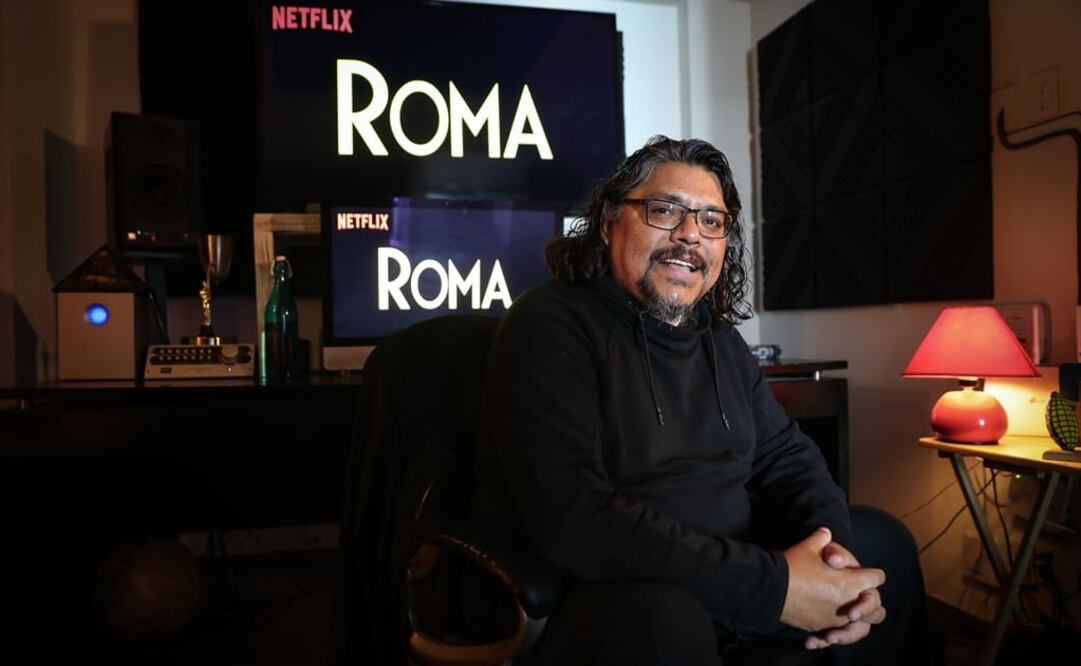Más Información

En Nochebuena, accidente de autobús deja ocho muertos en Zontecomatlán, Veracruz; 19 pasajeros resultan heridos

Suegro y cuñado de Iván Archivaldo, "El Chapito" comparecen en Puente Grande; son acusados de delincuencia organizada

Giran 25 órdenes de aprehensión contra responsables del incendio de Waldo’s en Hermosillo; cierran 68 sucursales en Sonora

Absuelven a "El Mochaorejas" de los delitos de secuestro y delincuencia organizada de una causa penal; seguirá en prisión

Anticorrupción investiga conflicto entre empresas por licitación de vales de despensa; "que violar la ley sea más caro que cumplirla"
Before he became a sound specialist, achieving an Academy Awards nomination , Sergio Díaz was a pretty good DJ working for a major hotel chain in Puerto Vallarta, Cancún, and Ixtapa .
Back then he was only 16 years old. With nothing more than a few reels, scissors, and a big imagination, he edited songs for his DJ console.
But once he became a parent and saw his kids grow, he realized that he wanted to be more of a “normal” person so that he could provide for his family. Thus, he accepted a friend’s offer to start working with Zeta , an audio company led by Martín Hernández , known for Amores Perros and Pan’s Labyrinth .
“I had no idea what I was doing, everyone was using computers and all I knew was to play my mixes on a turntable,” he commented.
In order to get acquainted with the technological process, he started reading anything that could help him learn about sound editing and arrived at the office three hours early to practice without being seen.
One day, he was caught editing a commercial and Martín Hernández decided to promote him.
Today, Sergio has over 20 years experience and he has worked on more than 70 film productions such as The Untamed , Veronica , and Desierto , by Jonás Cuarón.
Díaz was nominated for Best Sound Editing at this year’s Academy Awards thanks to his brilliant work in Alfonso Cuarón’s Roma . Said category is meant to acknowledge the people in charge of balancing, recording, and creating sounds for the big screen.
Some fun facts about Roma
Roma took Sergio 18 months of work ever since he was told that he would take part in a “big” though secret project, until the moment when the film was officially delivered.
As was the case with the rest of the production team, Alfonso Cuarón did not show the script to Díaz. All the sound editor knew was that the story took place in Mexico City’s Roma neighborhood in the 1970s .
“The first thing I did with Alfonso was talk about birds, about how the cars were supposed to sound, and how he wanted the house to sound like, with a big metal door and such.”
As early as December 2016, Sergio went out to explore different parts of Mexico City with his recorder in order to capture the sounds of the street.
“At the time, there was a more organic sound and not as industrial as it is today; there were more trees that rendered special acoustics and of course, there were less cars and horns. My biggest challenge was to be able to reproduce that. Every night, after the shooting, Cuarón came up to me and listened to my work,” he told.
Sergio hopes to win an Oscar award this February 24 .
dm
Noticias según tus intereses
[Publicidad]
[Publicidad]










